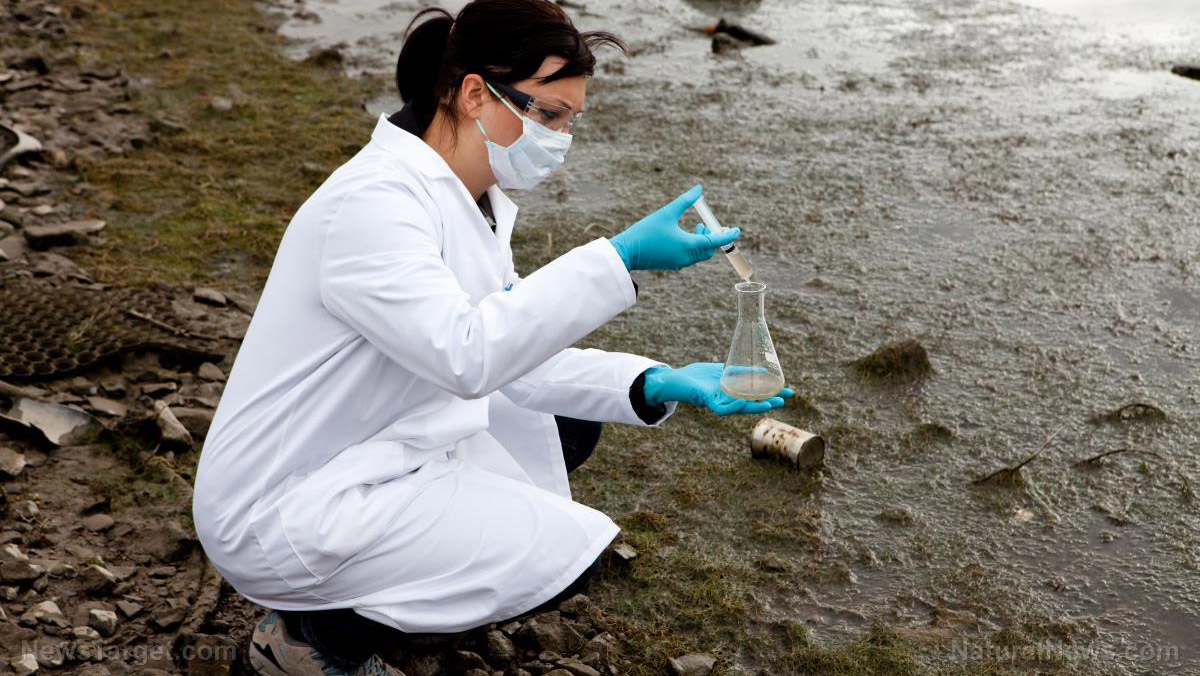Breaking down water pollutants in water, naturally: Simple method uses vitamin C, green LED light and a catalyst
08/06/2018 / By Michelle Simmons

Water pollution is on the rise globally. However, available methods that destroy pollutants in water use expensive and complex high-power lasers. That is – until a team of scientists from Martin Luther University Halle-Wittenberg (MLU) developed a new method that easily and cost-effectively breaks down stubborn pollutants in water. Their method – which could very well be a game-changer – only required a green LED light, a catalyst, and vitamin C, and these three ingredients can be used to create special types of electrons that reliably destroy the pollutants in water. Scientists in photochemistry are investigating on how light can be utilized to initiate chemical reactions.
“The idea is that light penetrates a molecule and triggers a reaction there,” said Martin Goez, a professor from MLU and one of the researchers of the study.
They called these special electrons “hydrated electrons.” These are released by light energy from their molecular compound in vitamin C to water, where they exist freely. In this state, the electrons become highly reactive and break down pollutants, without leaving any harmful residues.
The research team tested their developed method on chloroacetic acid, a highly toxic substance. Using their approach, they were able to break down the compound into its harmless components. In addition, their cost-effective method could generate just as many electrons as a high-power laser.
The approach, according to the researchers, is effective for decomposing harmful chlorides or fluorides as well as many other photochemical reactions that are hard to initiate through other methods.
“Our system consists of a standard green light-emitting diode, traces of a metal complex that acts as a catalyst and vitamin C. This method can be taught to undergrad students at a very early stage,” Goez explained.
In conclusion, the findings of the study indicated that the approach developed by MLU scientists is simple and cost-effective.
More on water pollution
Pollution in water occurs when toxic substances get into bodies of water (such as lakes, rivers, and oceans), being dissolved in them, lying suspended in the water, or depositing on the river beds and the ocean floor, which degrades the quality of water.
Some causes of water pollution include sewage from households, factories, and even commercial buildings. These become effluents which are often disposed into the sea. It also harms water health, particularly when people flush chemicals and pharmaceutical substances down the toilet or sinks to the sewer.
Another cause of water pollution is the disposal of solid wastes by humans in rivers, lakes, and oceans. People also litter items, such as cardboard, styrofoam, aluminum, plastic, and glass, in bodies of water.
Moreover, industrial waste from factories that use freshwater to carry waste from the plant into rivers contaminates water with pollutants, such as asbestos, lead, mercury, and petrochemicals. Oil spills from tankers and oil from ship travel also cause water pollution as oil does not dissolve in water and forms a thick sludge. Other causes include acid rain and an increase in water temperature.
Since water covers 70 percent of the surface of the Earth and makes up 60 percent of the human body, pollution in water greatly affects marine ecosystems, wildlife health, and well-being of humans. Harmful effects of water pollution include the death of aquatic animals, disruption of food chains, diseases, and destruction of ecosystems. (Related: New filter technology to prevent storm water pollution runoff.)
If you’d like to read more news stories and studies on water quality and the factors that affect it, you may go to CleanWater.news.
Sources include:
Tagged Under: chlorides, chloroacetic acid, contaminated water, electrons, environment, fluorides, hydrated electrons, LED light, light energy, photochemistry, polluted water, research, toxic chemicals, toxic water, vitamin C, water, Water contamination, water pollutants, water quality




















